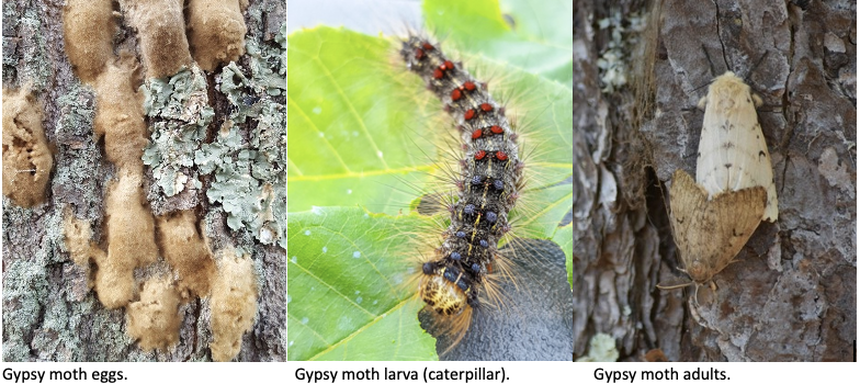 Introduced as a horticultural plant, European/common buckthorn (Rhamnus cathartica) leafs out early and keeps its leaves late into the year. It is able to form dense thickets, shading most native shrubs and understory plants. (Photo by Leslie J. Mehrhoff, University of Connecticut, Bugwood.org.) Introduced as a horticultural plant, European/common buckthorn (Rhamnus cathartica) leafs out early and keeps its leaves late into the year. It is able to form dense thickets, shading most native shrubs and understory plants. (Photo by Leslie J. Mehrhoff, University of Connecticut, Bugwood.org.) You have probably heard of invasive species or alien species. Maybe you have a boat and have been advised to “clean, drain, and dry” your boat after removing it from a body of water. Or maybe you’ve heard of invasive plants such as purple loosestrife or wild parsnip. But what are invasive alien species and why are they a threat? Alien species are plants, animals, or microorganisms introduced by human activities to areas outside their natural past or present distribution through many different intentional and unintentional pathways. Some of these include ship’s ballast water, recreational boating, aquarium trade, pet trade, personal and commercial horticulture, forestry, baitfish and live bait releases, “hitchhikers” on commodities (particularly shipping crates and firewood), and stowaways on various other forms of transportation. In addition, some have been introduced as a strategy to control an existing invasive species, to varying degrees of success. The impacts of alien species vary. Some will be ill-suited for the environment to which they are introduced and won’t survive for long. Some may be able to survive and live in harmony with their new ecosystem. Some however, will not only survive but, lacking natural balancing agents (such as predators) that were present in their place of origin, are able to outcompete native species, including traditional medicine plants. In this case, the alien species disrupt the natural relationships of the web of life. They may be able to spread rapidly and displace native species or become a predator, parasite, or disease to a native species. These alien species are considered invasive, as they disrupt natural communities, threatening the environment, including humans and the ways in which we rely on the natural world.  The European gypsy moth (Lymantria dispar dispar) has over 300 host tree species and is most destructive in its larval stage, when it can defoliate entire trees, including oak, maple, birch, white pine, white spruce, alder, and hawthorne. Repeated defoliation makes trees susceptible to other pests and diseases and can eventually lead to tree death. This year in Ontario, reports are pouring in of unusually high numbers of gypsy moth. If you spot them on your property, learn how to deal with them by going to invasivespeciescentre.ca/invasive-species/meet-the-species/invasive-insects/gypsy-moth/. (Photos by Karla Salp, Washington State Department of Agriculture, Bugwood.org.) The problem is exacerbated by human activities that damage the natural resistance of plant and animal communities to invasive species intrusion. These alterations include climate change, removing forest canopy, converting habitat, adding roads, and developing shorelines. Invasive species are able to be more successful in eastern Ontario (and other places) due to these ecological stressors on our native species. In 2010, Plenty Canada published a report titled Invasive Species in Eastern Ontario: Some Aboriginal Perspectives. This report stemmed from the idea that our management decisions have failed to include the needs of our native species of plants and animals and that we must learn how to work with nature instead of against it in order to prevent and manage the spread of invasive species. This summer, Plenty Canada will be updating this report and making it available online. So, keep an eye out for the publication of the new revised version to learn more about how the issue of invasive species is viewed through the lens of Two-Eyed Seeing.  White-nose syndrome is a disease that has killed millions of bats on Turtle Island (North America). It is caused by a fungus called Pseudogymnoascus destructans that was accidentally introduced from Eurasia where it does not cause illness in native bats. (Photo by Pete Pattavina, U.S Fish and Wildlife, Bugwood.org.) White-nose syndrome is a disease that has killed millions of bats on Turtle Island (North America). It is caused by a fungus called Pseudogymnoascus destructans that was accidentally introduced from Eurasia where it does not cause illness in native bats. (Photo by Pete Pattavina, U.S Fish and Wildlife, Bugwood.org.) Throughout the summer we will also be identifying and monitoring invasive species on the 500-acre Algonquin nature preserve where our office resides and creating some educational resources about invasive species that are found in our region. Refer to our website for those as well. For now, to learn more about how to identify, report, and prevent the spread of invasive species in Ontario go to invadingspecies.com. Quick tips: Non-invasive plants for your garden Clean, drain, dry your boat Reporting an invasive species is easy! — Emily Morris’ environmental initiatives conducted with Plenty Canada are funded by the Ontario Federation of Anglers and Hunters under the Invading Species Awareness Program. She is a member of the Invading Species Hit Squad: http://www.invadingspecies.com/programs/hit-squad/.
0 Comments
Your comment will be posted after it is approved.
Leave a Reply. |
|
-
Home
- Donate
-
Projects
-
Canada
>
- Plenty Canada CampUs
- The Healing Places
- Two-Eyed Seeing Bird Knowledge
- Niagara Escarpment Biosphere Network
- Greenbelt Indigenous Botanical Survey
- Great Niagara Escarpment Indigenous Cultural Map
- Ginawaydaganuc Indigenous Food Sovereignty
- Indigenous Languages and Cultures Programs >
- Wild Rice
- Good Mind Grappling
- Ginawaydaganuc Village
- Youth Programming >
- Caribbean >
- Central & South America >
- Africa >
-
Canada
>
- News
- Resources
- Partners
- Contact Us
Our LocationPlenty Canada 266 Plenty Lane Lanark, Ontario, Canada K1G 3P4 (613) 278-2215 |
Donate to
|
Subscribe to our Newsletter |
